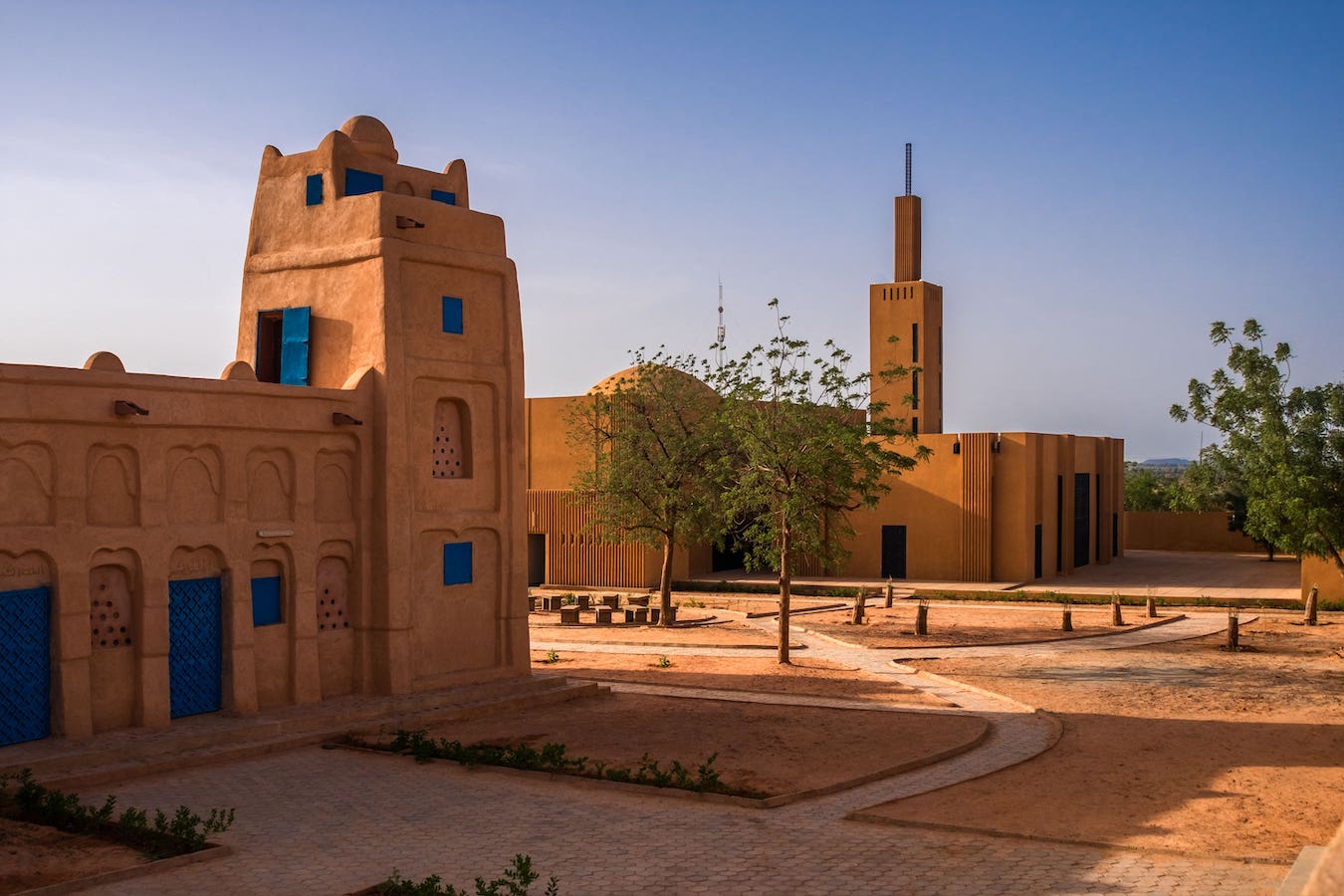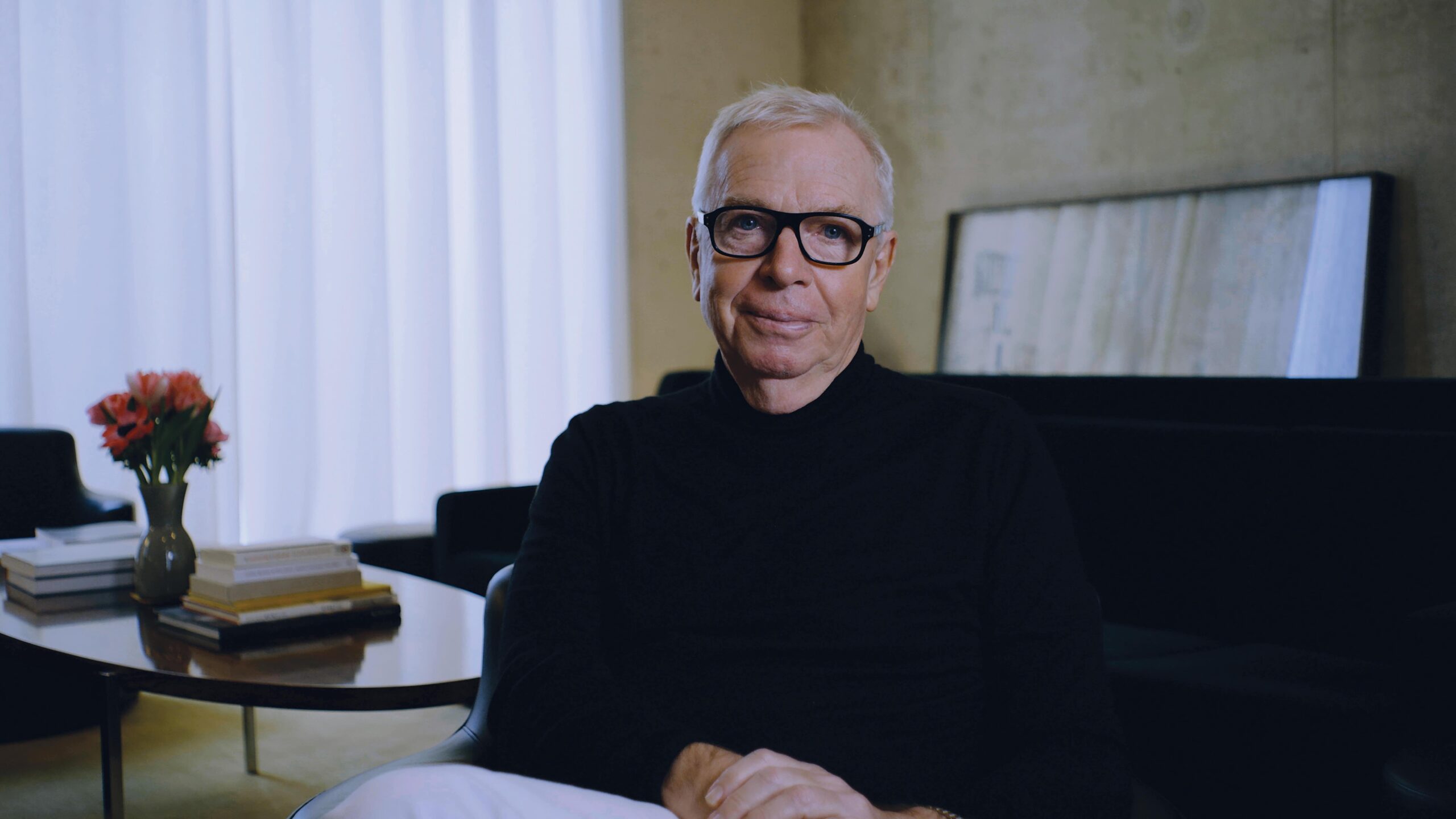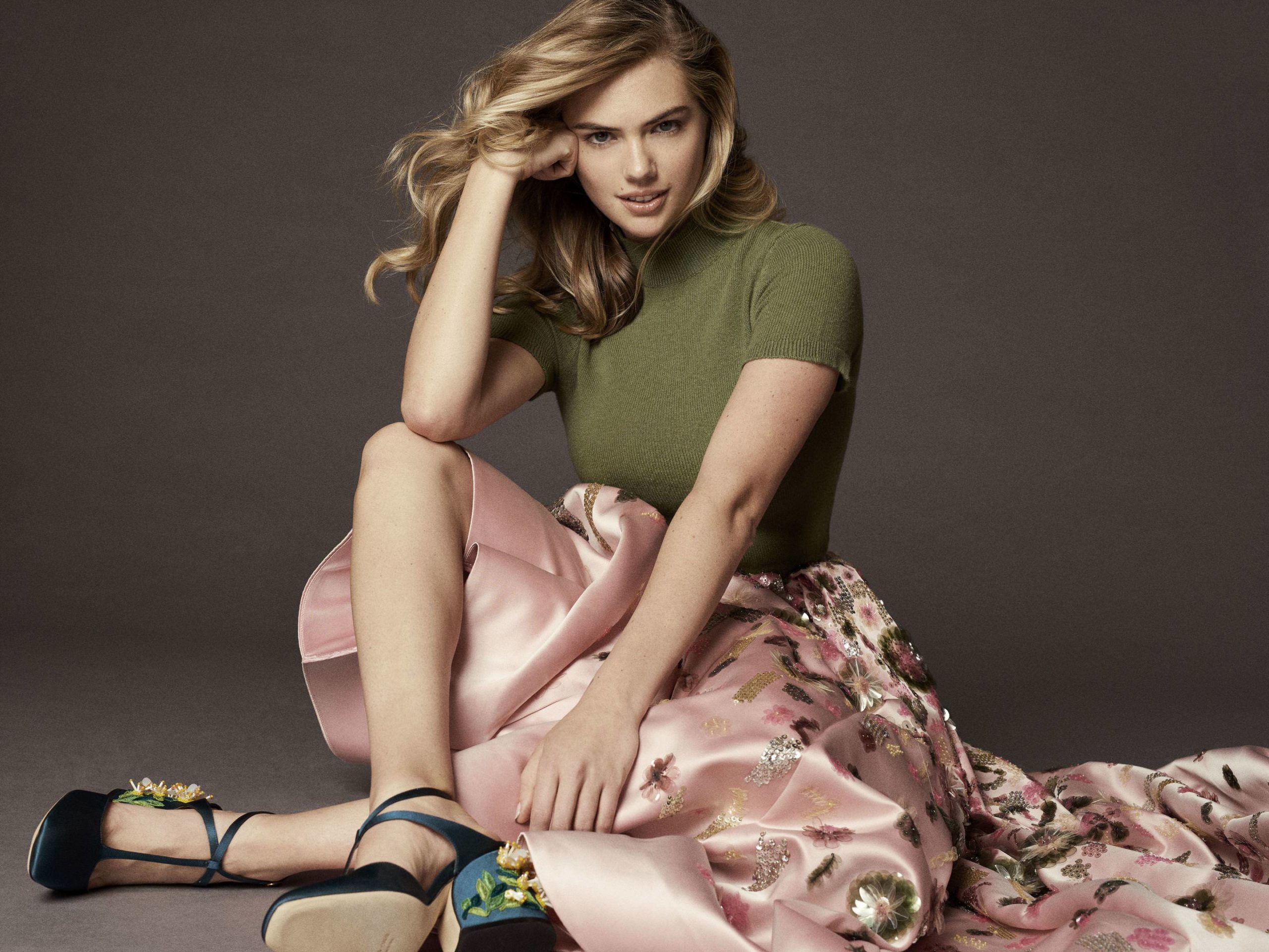Hend Almatrouk and Gijo Paul George founded the architecture and design firm Studio Toggle when they were architectural students at the University of Applied Arts in Vienna in 2011. A year later, they moved to Kuwait to be closer to what they were interested in working on—architectural and urban design projects that focus on logical plans and problem-solving techniques. The duo believes in organized chaos, striving to create balance between opposites. Over the years, Studio Toggle’s stores, private homes, apartment buildings, and temporary installations have focused on these touchpoints, executed by cellular systems and organizations like grids and selfsupporting structures.
Additionally, the firm is concerned with material waste and designs consciously with construction costs and the longevity of the project in mind. Last year, Studio Toggle publicly exemplified those values through a temporary installation in Kuwait entitled Unit+—a towering structure made entirely of recycled timber that called attention to the amount of waste that is generated during construction. Through functional approaches and sustainable initiatives, Studio Toggle infuses these interrelated themes into each project to encourage urban coherence and a more sustainable future.
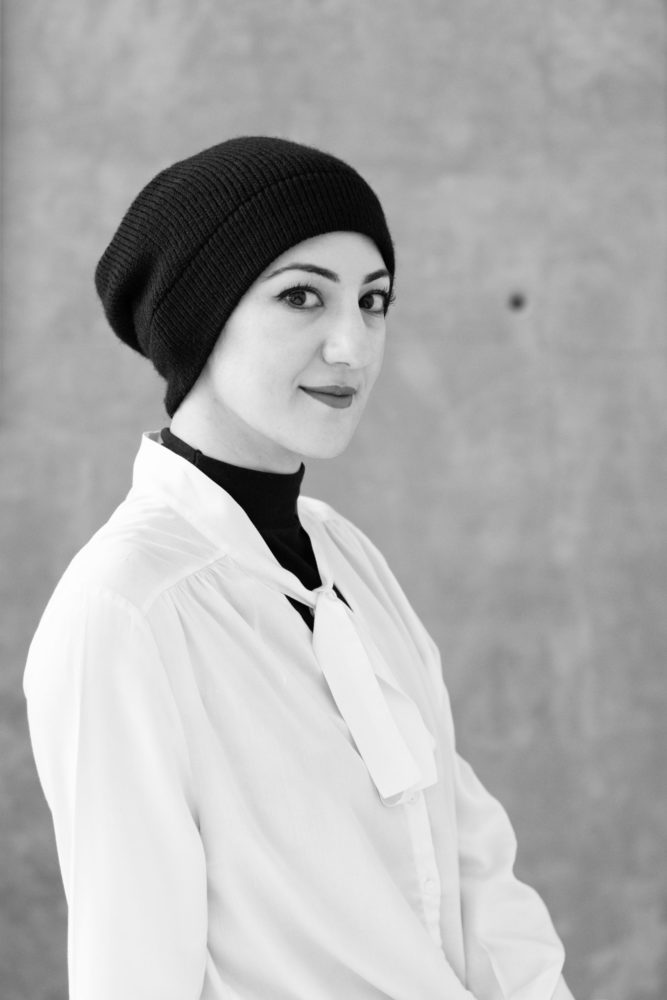
Hend Almatrouk, Founder and CEO; courtesy of Studio Toggle.
Whitewall spoke with Almatrouk about the influences of fashion and her past, as well as what she would like to design in the future.
WHITEWALL: What kind of projects do you like to take on?
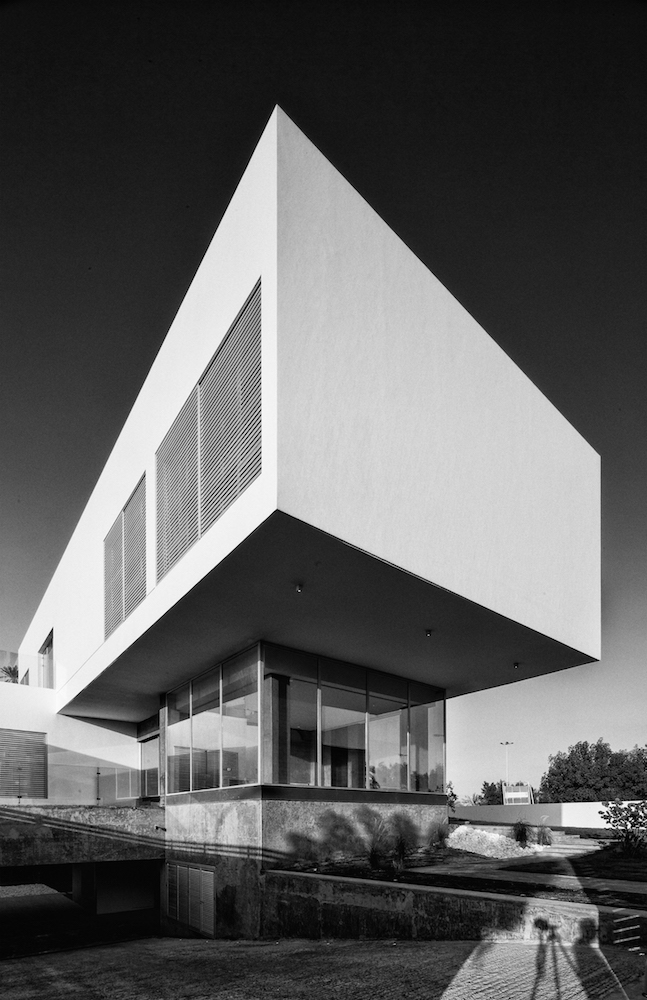
F.LOT villa in Al Bida’a, Kuwait; courtesy of Studio Toggle.
HEND ALMATROUK: After graduating from separate master’s courses at the University of Applied Arts in Vienna, Gijo and I wanted to start a design firm that focuses on the built environment in both architectural and urban scale. So we founded Studio Toggle back in 2011, and in 2012 we found ourselves moving to Kuwait, working on our first real project. Our desire is to author solutions which improve people’s daily lives and enhance their interactions with their surroundings. Our expertise ranges from crafted residential buildings to civic and commercial projects of small to medium scales. In recent years, we have also been involved in ephemeral and temporal architecture like pavilions and installations.
WW: Five years ago, Studio Toggle opened an office in Portugal. How does being based in Kuwait and Portugal impact the projects you take on?
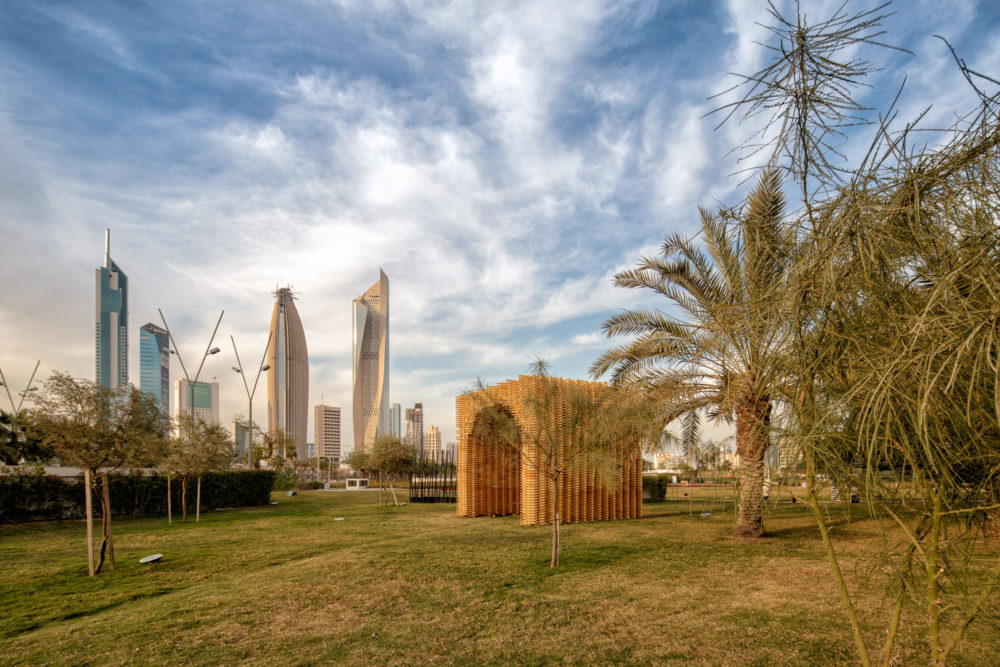
Unit +, Contribution to Project Ucon, Kuwait, 2019; courtesy of Studio Toggle.
HA: Moving to Kuwait meant that we will be working within a specific cultural and urban context. But we always knew our strength comes from our diversity and multicultural background. To that effect, we started Studio Toggle Porto in 2016 with Riu Gonçalves and Pedro Varela as associates. This enables us to stay global and keep up with the frenetic pace of avant-garde European design, while drawing on the vast experience and architectural pragmatism of Portuguese minimalism.
WW: You’ve said that there wasn’t a specific moment you knew you wanted to be an architect, but you always wanted to create something that will “express people and social issues.” What social issues do you feel you’re currently expressing?
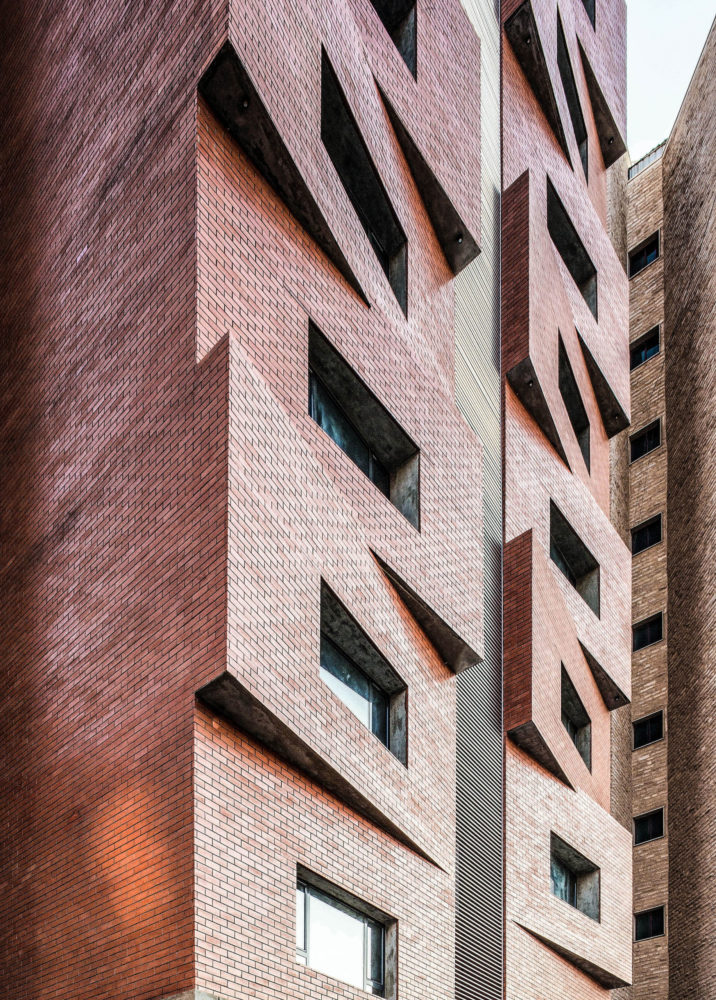
Edges Apartments in Salmiya, Kuwait; courtesy of Studio Toggle.
HA: I believe architecture is more than fancy buildings and pretty materials. The manner in which the building interfaces with the street always sends a certain message. Specifically, in the Middle East and especially in Kuwait, buildings tend to be disjoint islands in terms of their connection with the larger urban context. This creates dysfunctional streetscapes and urban disorder. With every building we design, we hope to heal this by planting the seeds for urban coherence by means of very simple but effective architectural gestures. By prioritizing the oft-neglected pedestrian over vehicles while designing the soft and hardscapes, our projects set an example of creating a community feeling that is often lacking in Kuwaiti neighborhoods.
WW: Studio Toggle was the recipient of the Cityscape Award 2017 for a residential building, The Edges, in Salmiya, Kuwait. Can you tell us about this project?
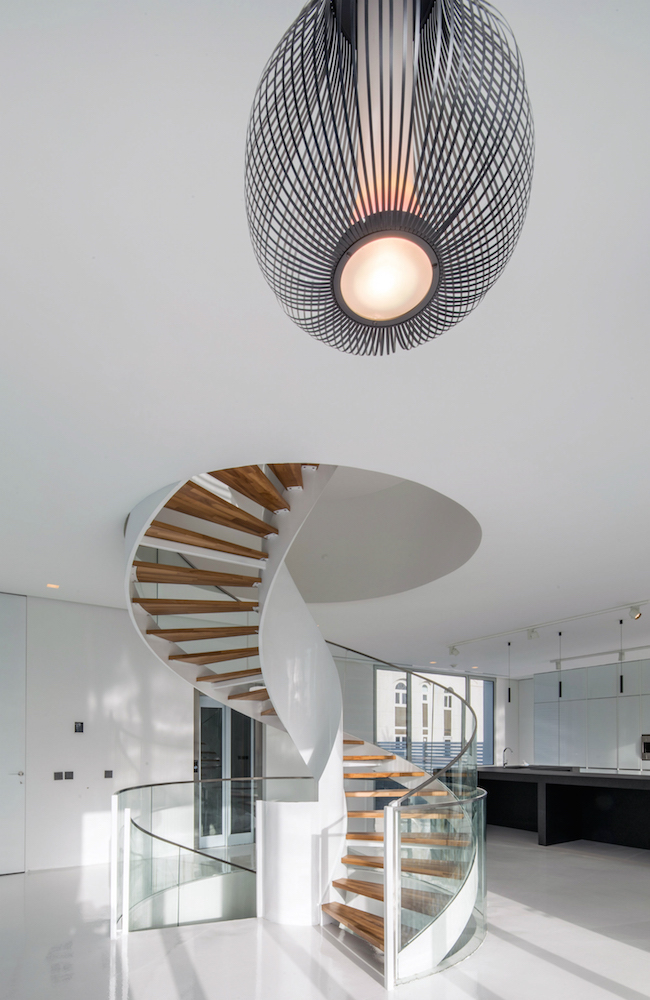
Spiral staircase inside the F.LOT villa in Al Bida’a, Kuwait; courtesy of Studio Toggle.
HA: Edges apartment building in Salmiya, Kuwait, is an example of how we employed the above mentioned strategies to elevate the often-neglected “expat housing” typology to something that fosters pride and a community feel for its occupants. The building is typical of expat neighborhoods which have highdensity midrise buildings. Most of these projects are built on shoestring budgets with an aim to maximize the rental income. This in turn created neighborhoods full of anonymous cookie cutter midrise buildings without any context or community feeling. In this context, our aim was to create a building that defies these stereotypes by having an unmistakable street presence, at the same time enhancing the urban quality of the space that it occupies. We believe we achieved this objective comprehensively, and we are grateful to have our efforts validated by the Cityscape Award committee.
WW: What are some environmental challenges you’ve faced when designing a new space?
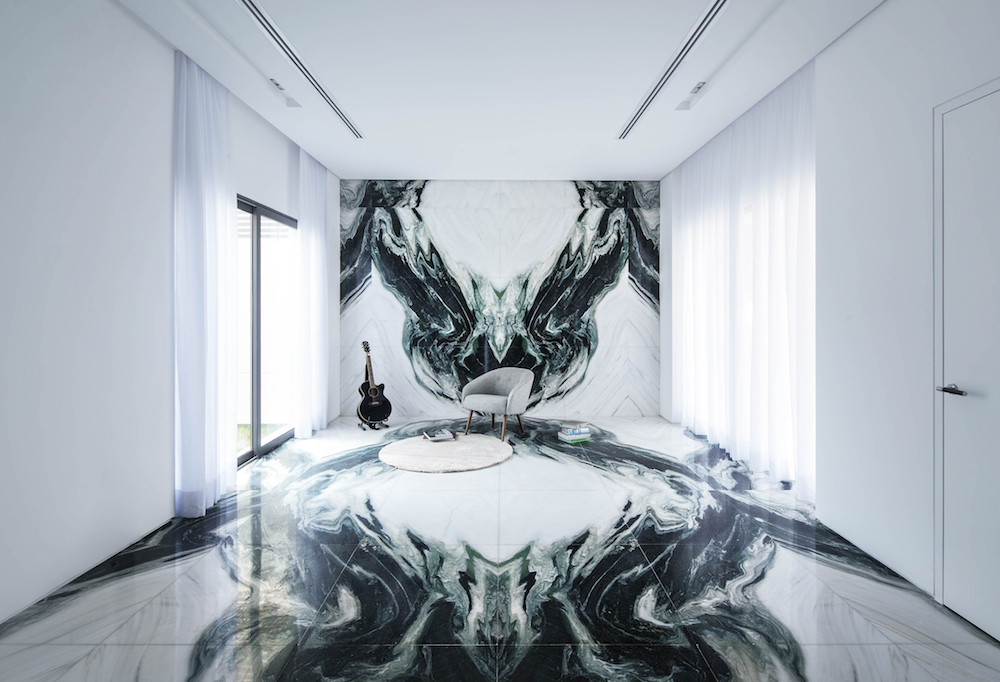
Interior living space of a private residence in Yarmouk; courtesy of Studio Toggle.
HA: For a firm which sees the majority of its projects being built in a hostile desert environment, the challenges are huge, as active climate control devices have to be deployed 24/7. However, as a policy, we try to minimize the impact of these systems and their need. In Kuwait, the biggest challenge is to maintain the openness of our signature spaces while minimizing the impact of heat gain and dust storms. We actively employ BIM and environmental analysis software to facilitate our data-driven design solutions to minimize these challenges.
WW: What type of memories do you hope the people inside your buildings take away?
HA: Memories are linked with our feelings. You remember something because it made you feel a certain way in a certain point of time. The best thing I can hope for is for people to perceive our buildings as uplifting. It could be triggered by that shaft of light from the morning sun through that east-facing window, the sound of a water fountain on a balmy afternoon, or that big tree that you read your book under in your courtyard. These moments lift you up and embed themselves in your subconscious.
WW: You’ve said that you are inspired and influenced by fashion—specifically, haute couture, by designers like Alexander McQueen and Iris van Herpen— saying, “I think fashion and architecture feed each other and the relationship goes beyond mere aesthetics.” Can you elaborate on this idea?
HA: The first project that Gijo and I collaborated on before we founded Studio Toggle—a competition entry for a cinema in Moscow—was inspired by the ruffle of twirling skirt. The exercise was hinged on the spatial quality of that ruffle and not just the aesthetic appeal. I believe fashion and architecture have similar creative processes. Both disciplines shift between macro and micro contexts. Just like our clothes are our interface with our fellow beings, we believe that buildings are our interface between communities and larger groups of people. And this interface does not merely shelter. Sometimes it even becomes a manifesto.
WW: What is your first step in designing something?
HA: In early stages of design, I take my time—starting fresh has its own energy. I think everyone has their own way of building an idea and how to process it into an end product, but I think the enormity of the challenge is proportional to the feeling of excitement. I do not have a certain recipe. It depends on the type of project, where I am, and my state of mind. But the first step is always to clear my mind, take my time, and let the brief sink in. Then the project just evolves by itself until you just know it is right.
WW: How has the idea of sustainability impacted your designing? What about the fluctuation in the economy?
HA: To be sustainable is to be sensitive to your environment and resources. We always take into consideration the sustainable factor in the materials we use, saving energy and optimizing our designs based on data-driven processes. However, I have to admit it is a challenge to get the stakeholders to buy into the idea of investing a bit extra to be more energy efficient. I believe this is because in the region the energy costs are heavily subsidized, and investors do not have an incentive to incorporate greener technologies into their projects. Whenever the opportunity presents itself, I advise my clients to invest in sustainability and green tech, as it pays for itself in the long run.
WW: Is there a project you have yet to do, but would like to?
HA: I would love to design a library, a winery, and a wellness resort.





